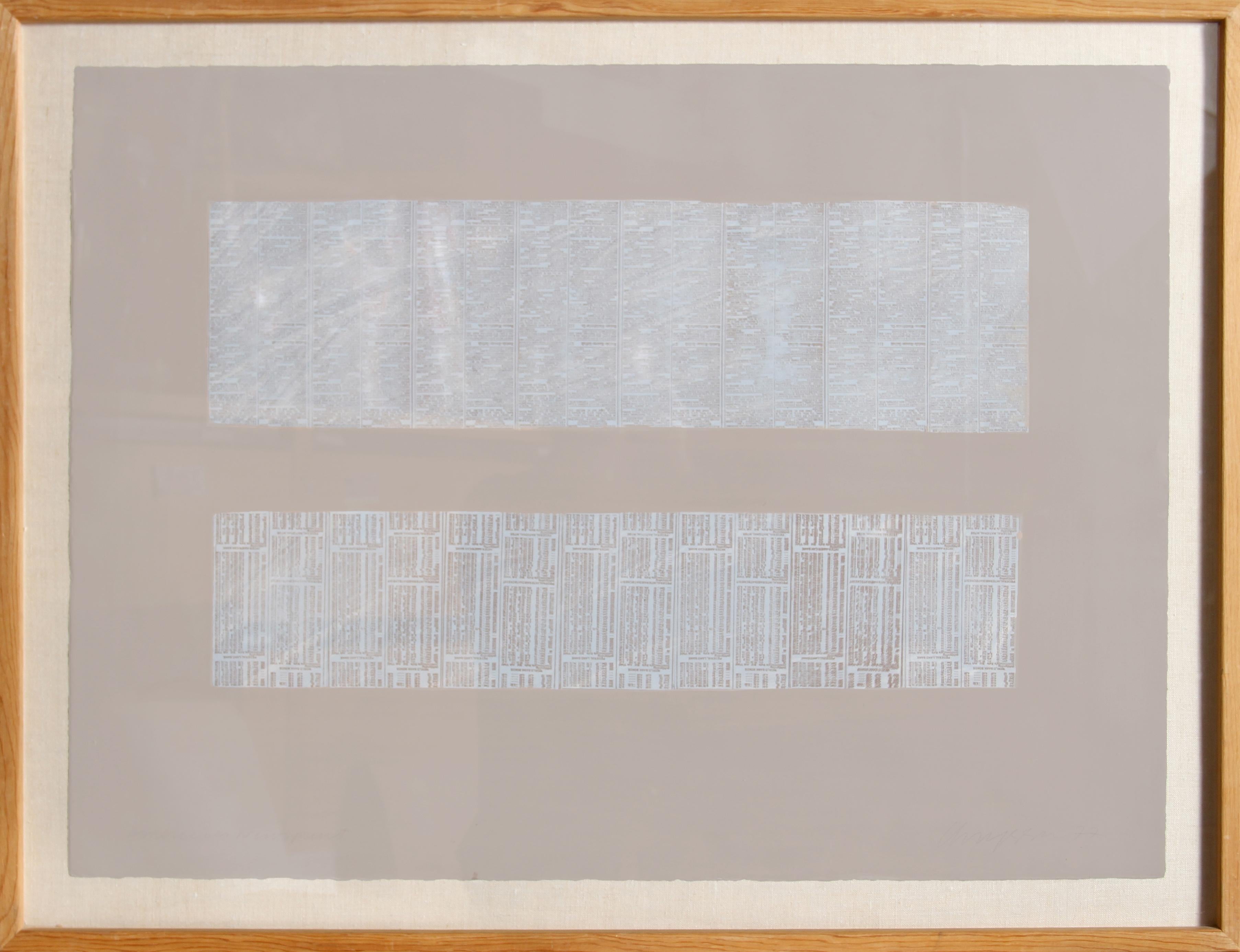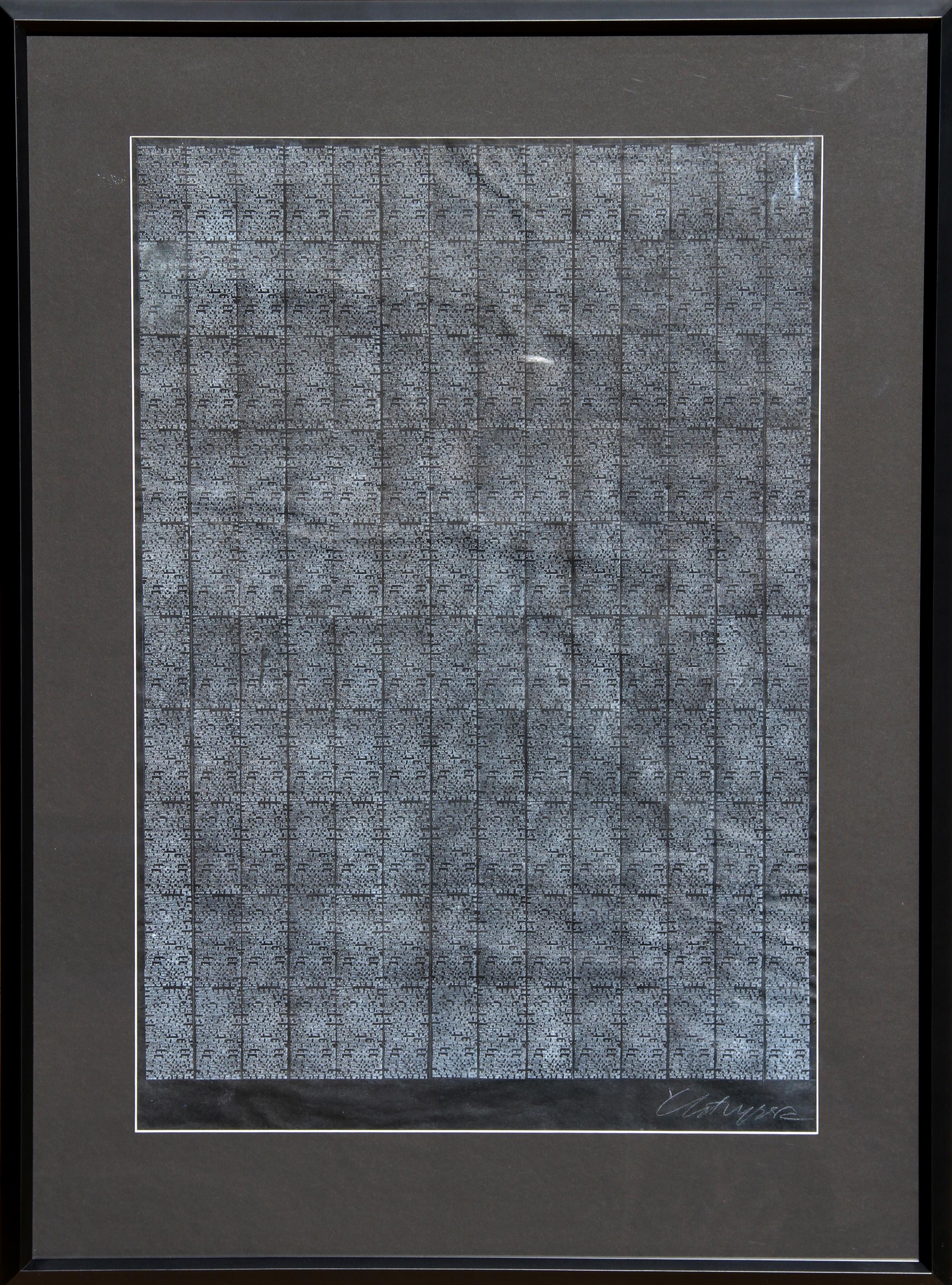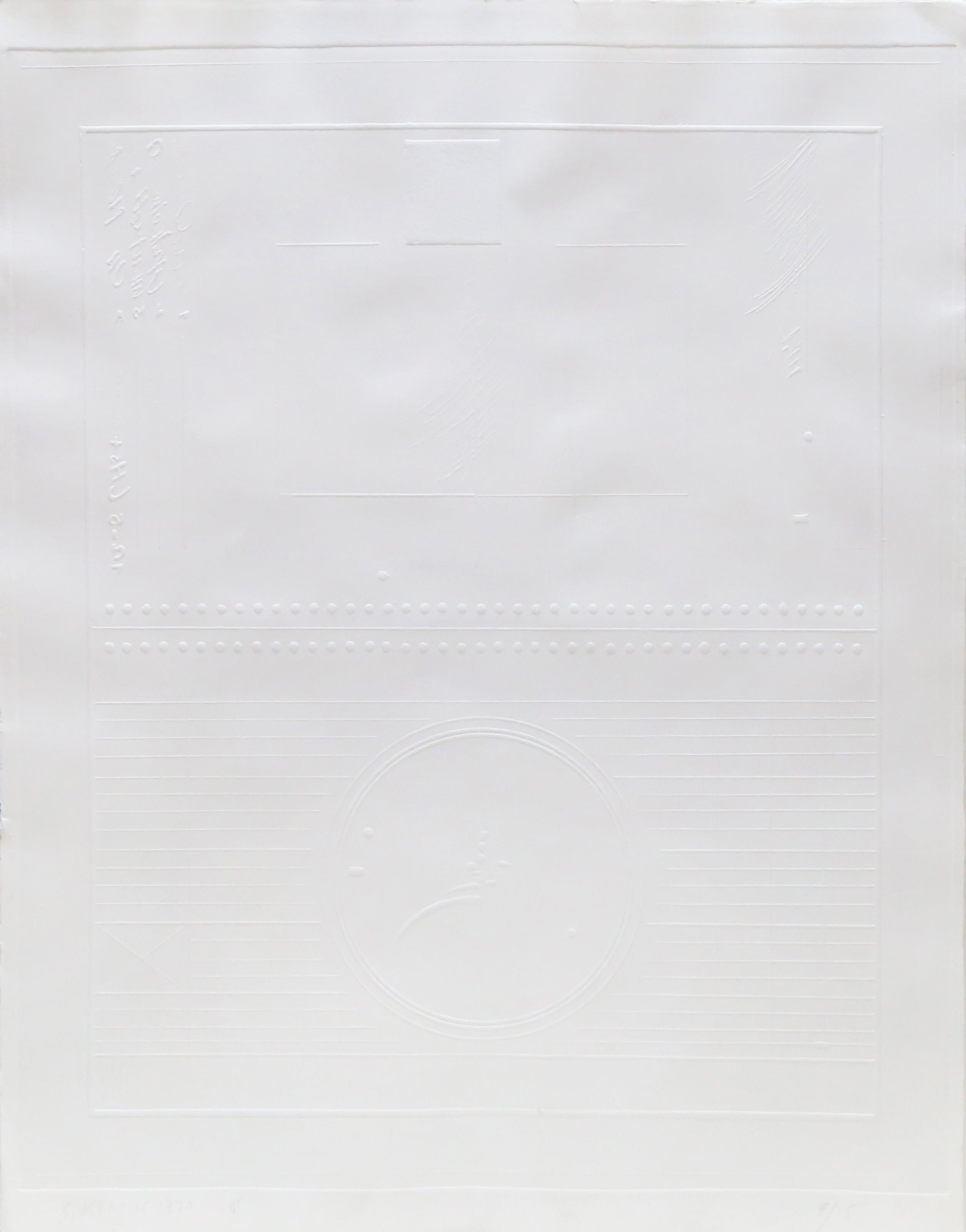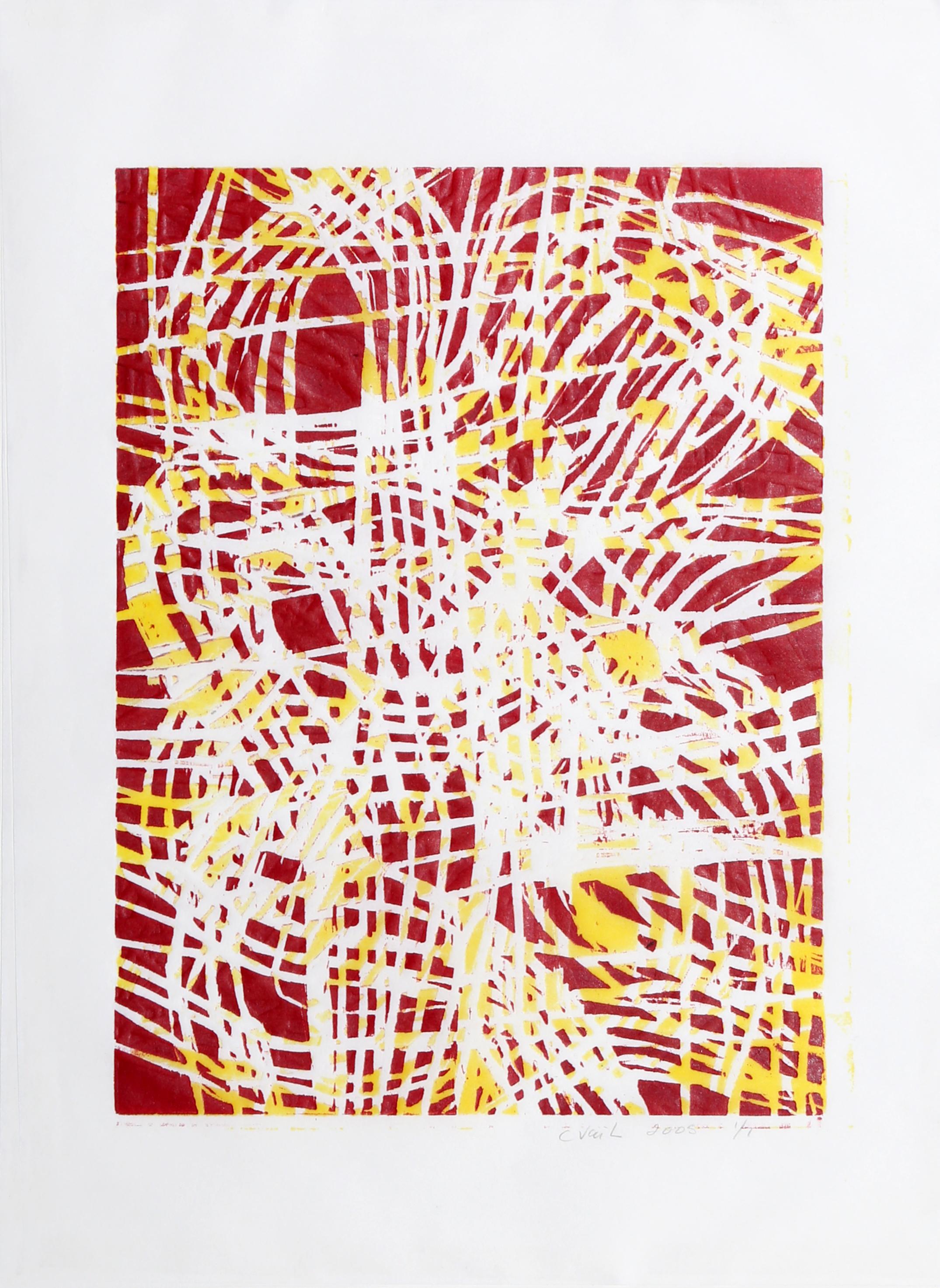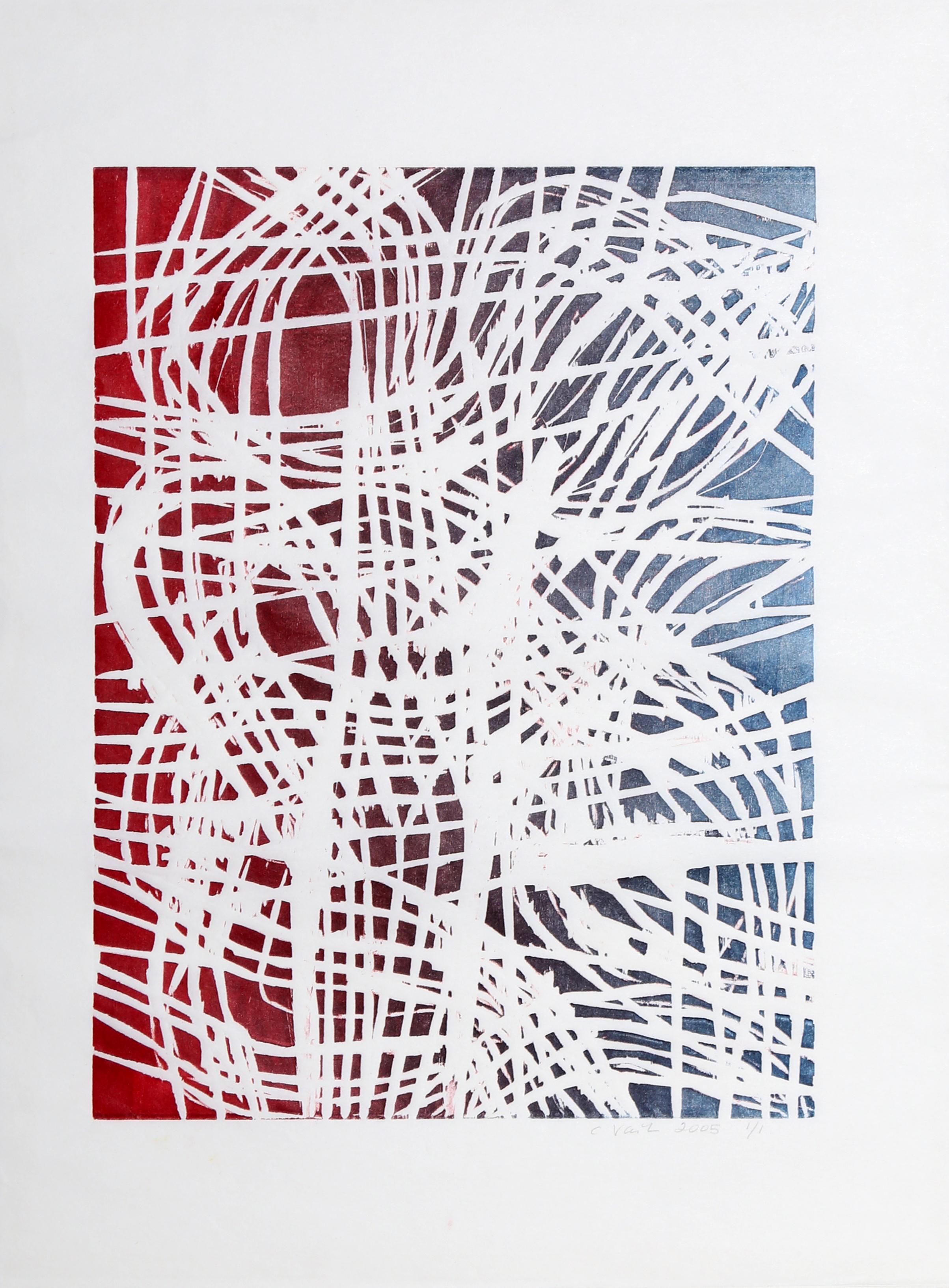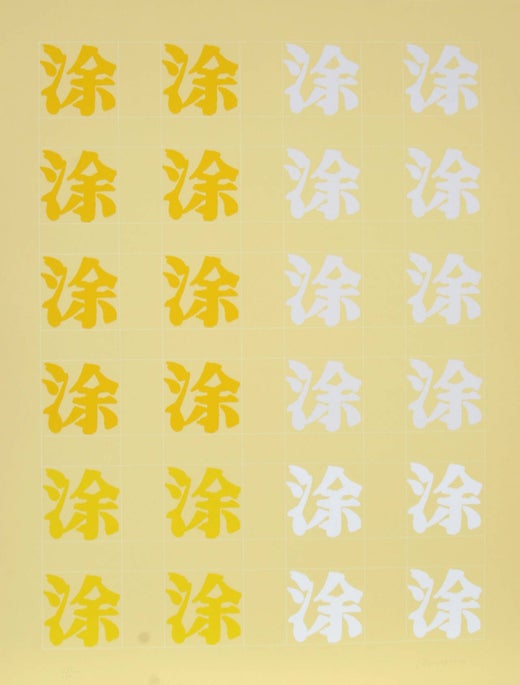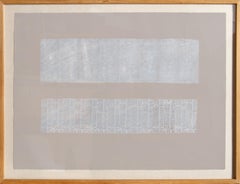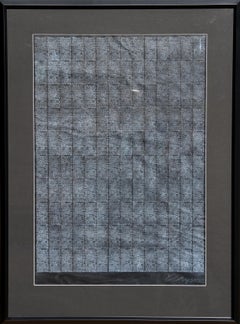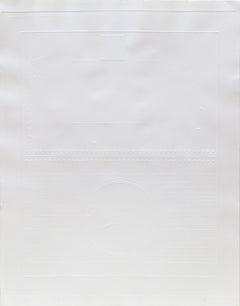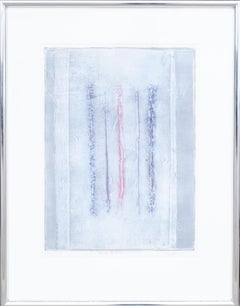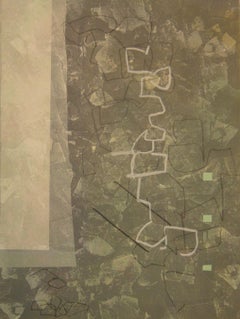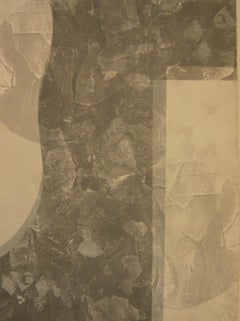Items Similar to Classified Ad, Monoprint by Chryssa
Want more images or videos?
Request additional images or videos from the seller
1 of 6
Chryssa Vardea-MavromichaliClassified Ad, Monoprint by Chryssa1977
1977
$4,500
£3,432.29
€3,908.55
CA$6,323.87
A$6,897.07
CHF 3,653.60
MX$82,686.10
NOK 46,530.67
SEK 42,548.84
DKK 29,200.66
About the Item
Artist: Chryssa, Greek (1933 - 2013)
Title: Classified Ad
Year: 1977
Medium: Silkscreen and Acrylic Monoprint on Paper, signed, dated and titled in pencil
Image Size: 14.5 x 22 inches
Size: 22 in. x 30 in. (55.88 cm x 76.2 cm)
Frame Size: 26 x 34 inches
- Creator:Chryssa Vardea-Mavromichali (1933 - 2013, Greek)
- Creation Year:1977
- Dimensions:Height: 26 in (66.04 cm)Width: 34 in (86.36 cm)Depth: 2 in (5.08 cm)
- Medium:
- Movement & Style:
- Period:
- Condition:
- Gallery Location:Long Island City, NY
- Reference Number:1stDibs: LU4663328471
Chryssa Vardea-Mavromichali
Chryssa, (born Chryssa Vardea Mavomichali) is best known for her "Luminist" sculpture in brilliantly colored neon tubing, was born in Greece and now ranks as one of the outstanding and innovative artists in America today. Chryssa has had individual and collective exhibition shows at the Museum of Modern Art, The Guggenheim, The Whitney -New York. Harvard University; Institute of Contemporary Art at the University of Pennsylvania; Carnegie Institute among many others.
About the Seller
4.9
Platinum Seller
Premium sellers with a 4.7+ rating and 24-hour response times
Established in 1979
1stDibs seller since 2014
3,197 sales on 1stDibs
Typical response time: 1 hour
- ShippingRetrieving quote...Shipping from: Long Island City, NY
- Return Policy
More From This Seller
View AllAmerican Newsprint, Monoprint by Chryssa
By Chryssa Vardea-Mavromichali
Located in Long Island City, NY
Artist: Chryssa, Greek (1933 - 2013)
Title: American Newsprint
Year: 1977
Medium: Silkscreen and Acrylic Monoprint on Paper, signed, dated and titled in pencil
Image Size: 13 x 21.5 ...
Category
1970s Conceptual Abstract Prints
Materials
Monoprint
Jobs and Employment Classifieds, Monoprint by Chryssa
By Chryssa Vardea-Mavromichali
Located in Long Island City, NY
Artist: Chryssa, Greek (1933 - 2013)
Title: Jobs and Employment Classifieds
Year: 1982
Medium: Monoprint Silkscreen, signed l.r.
Image Size: 29.5 x 21 inches
Size: 39 in. x 29.5 in. ...
Category
1980s Conceptual Abstract Prints
Materials
Monotype
Saratoga, Abstract Monoprint on Handmade Paper by Nancy Genn
By Nancy Genn
Located in Long Island City, NY
Artist: Nancy Genn, American (1929 - )
Title: Saratoga
Year: circa 1978
Medium: Monoprint on hand-made paper, signed l.l.
Size: 40 x 54 inches (101 x 137 cm)
Category
1970s Abstract Abstract Prints
Materials
Handmade Paper, Monoprint
Untitled VI, Conceptual Intaglio by Shlomo Koren
Located in Long Island City, NY
Shlomo Koren, German/Israeli (1932 - ) - Untitled VI, Year: 1970, Medium: Intaglio, signed and numbered in pencil, Edition: 15, Size: 26 x 20 in. (66.04 x 50.8 cm)
Category
1970s Conceptual Abstract Prints
Materials
Intaglio
Abstract Monoprint by Clover Vail
By Clover Vail
Located in Long Island City, NY
Abstract 3
Date: 2005
Monoprint on paper signed, numbered, and dated in pencil
Edition of 1/1
Image Size: 12 x 9 inches
Size: 16 x 12 in. (40.64 x 30.48 cm)
Category
Early 2000s Abstract Abstract Prints
Materials
Monoprint
Abstract Monoprint by Clover Vail
By Clover Vail
Located in Long Island City, NY
Abstract 1
Date: 2005
Monoprint on paper signed, numbered, and dated in pencil
Edition of 1/1
Image Size: 12 x 9 inches
Size: 16 x 12 in. (40.64 x 30.48 cm)
Category
Early 2000s Abstract Abstract Prints
Materials
Monoprint
You May Also Like
Lithograph Made with String by Paula Clendenin
Located in New York, NY
Paula Clendenin (American, b. 1949)
Untitled, 1983
Lithograph
Sight: 30 x 22 1/2 in.
Framed: 44 3/4 x 34 3/4 in.
Numbered, titled, dated and signed bottom: 1/15 / "The Things That Matter" / 83
Artist Paula Clendenin was born June 22, 1949, in Cedar Grove, Kanawha County. She has earned national acclaim for her paintings: richly colored, textured shapes that merge West Virginia’s mountain...
Category
1980s American Modern Abstract Prints
Materials
Lithograph
BRHHP 40, Original Signed Contemporary Neutral Toned Monoprint
By Sheila Crider
Located in Boston, MA
BRHHP 40, Original Signed Contemporary Neutral Toned Monoprint
30" x 22" (HxW), Monoprint
This simple abstract monoprint by artist Sheila Crider features a neutral color palette of ...
Category
21st Century and Contemporary Abstract Prints and Multiples
Materials
Monoprint
BRHHP 05, Original Signed Contemporary Neutral Toned Monoprint
By Sheila Crider
Located in Boston, MA
BRHHP 05, Original Signed Contemporary Neutral Toned Monoprint
30" x 22" (HxW), Monoprint
This simple abstract monoprint by artist Sheila Crider exudes an air of calm and stillness....
Category
21st Century and Contemporary Abstract Abstract Prints
Materials
Monoprint
Mnemonic codes 001, Painting, Acrylic on Paper
By Cristina Stefan
Located in Yardley, PA
Mnemonic codes #001 This original abstract painting is made with acrylic painting on paper which was fold previously and unfold before applying the acrylic painting.. Originall...
Category
21st Century and Contemporary Abstract Abstract Paintings
Materials
Acrylic
Mnemonic codes 002, Painting, Acrylic on Paper
By Cristina Stefan
Located in Yardley, PA
Mnemonic codes #002 This original abstract painting was created using acrylic paint on St-Armand paper handcrafted in Montreal one sheet at a time, using traditional methods. The...
Category
21st Century and Contemporary Abstract Abstract Paintings
Materials
Acrylic
Intervals, Abstract Painting
Located in San Francisco, CA
Artist Comments
Small geometric shapes densely populate the abstract composition, depicting intervals of spatial balance between grays, whites, and blacks. The upper part fea...
Category
21st Century and Contemporary Abstract Mixed Media
Materials
Mixed Media
Read More
Chryssa’s 1962 Neon Sculpture Was Way ahead of the Art-World Curve
By working with lettering, neon and Pop imagery, Chryssa pioneered several postmodern themes at a time when most male artists detested commercial mediums.
Romare Bearden’s Humanity Infuses His Bright, Bold Art
Through collage, painting and printmaking, the artist foregrounded Black life in America in revolutionary new ways.
More Ways To Browse
A Calder Sky Bird
Adrian Brewer
Agnes Martin Praise
Albers Galerie Melki
Albert Turner
Alberto Hernandez
Alexander Calder Forest
Alexander Calder Signed Lithograph Balloons
Andy Warhol Green Stamps
Anne Appleby
Antonio Peticov On Sale
Artists For Obama
Banksy Vinyl Record
Barbican Poster
Black Star Rosenquist
Brandon Boyd Art
Brandon Boyd
Brent Wadden
